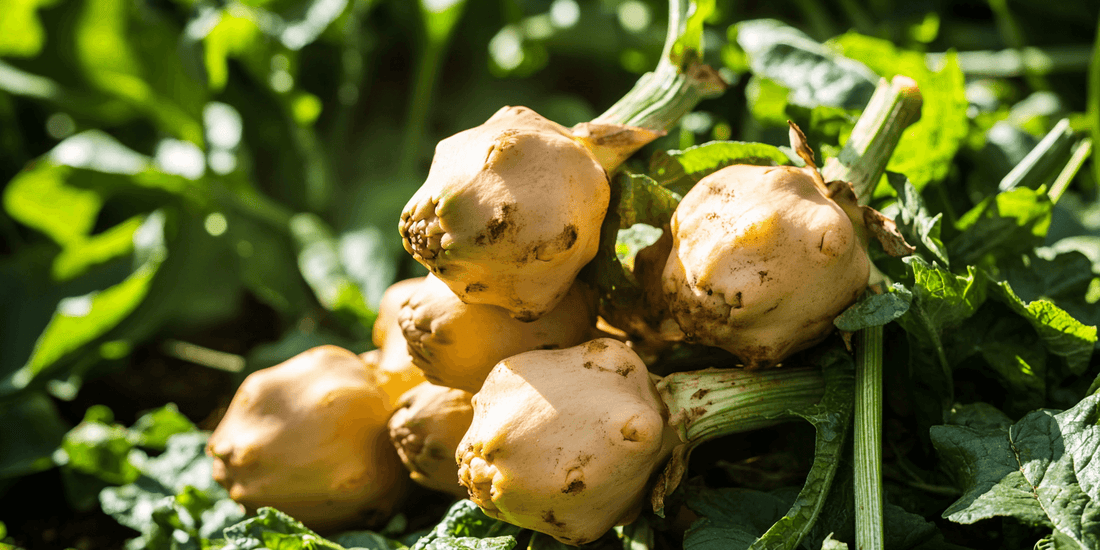Gardening offers countless rewards, but some plants, like Jerusalem artichokes, require careful management to prevent them from overtaking garden spaces. Known for their vigorous growth and tuber reproduction, Jerusalem artichokes can become invasive if left unchecked. This guide provides detailed strategies for managing invasive plants, with a focus on Jerusalem artichokes, including methods to control their spread, identifying invasive behaviors, using planting barriers, and the importance of regular harvesting.
Methods to Control Spread
Jerusalem artichokes are resilient and prolific, spreading through their underground tubers. Without proper care, they can dominate garden spaces, crowding out other plants. Managing their spread requires proactive measures.
Strategies for Controlling Jerusalem Artichokes
- Limit Planting Areas: Only plant Jerusalem artichokes in designated garden zones where their spread can be monitored and managed.
- Use Containers or Raised Beds: Growing Jerusalem artichokes in large containers or raised beds prevents their tubers from spreading into surrounding soil.
- Monitor and Remove Strays: Regularly inspect nearby areas for stray plants that may have emerged from overlooked tubers and remove them promptly.
Organic and Sustainable Solutions
Incorporate organic practices such as mulching and manual removal to control Jerusalem artichokes sustainably. Avoid chemical herbicides, as they can harm beneficial organisms in your soil.
Identifying Invasive Behavior
Recognizing the signs of invasive behavior is the first step in managing the spread of Jerusalem artichokes effectively. Their rapid growth and ability to reproduce through tubers make them highly adaptable.
Signs of Invasiveness
- Rapid Proliferation: Jerusalem artichokes quickly form dense patches that can overshadow and outcompete neighboring plants.
- Tubers Resurfacing: Even after harvesting, leftover tubers often sprout, leading to unintended regrowth.
- Encroachment on Other Crops: When left unchecked, Jerusalem artichokes can invade areas meant for other crops, reducing biodiversity in your garden.
Garden Invasiveness Tips
Stay vigilant about monitoring Jerusalem artichoke plants throughout the growing season. Early intervention is key to preventing them from establishing dominance in your garden.
Planting Barriers for Control
Physical barriers are among the most effective methods for containing Jerusalem artichokes. These barriers prevent tubers from spreading while still allowing plants to thrive in their designated space.
Constructing Jerusalem Artichoke Barriers
- In-Ground Barriers: Use sturdy materials such as metal or heavy-duty plastic sheets to create underground barriers around the planting area. These barriers should extend at least 18 inches deep to block tuber spread.
- Raised Beds: Raised beds with reinforced sides are an excellent option for growing Jerusalem artichokes while keeping them contained. Ensure the beds are high enough to prevent tubers from escaping.
- Root Pouches: Heavy-duty fabric root pouches provide a portable and manageable way to grow Jerusalem artichokes without the risk of spreading.
Benefits of Planting Barriers
Barriers not only control the spread of invasive Jerusalem artichokes but also allow for easier maintenance and harvesting. They can be integrated into your garden design for a more organized and attractive layout.
Regular Harvesting for Management
Frequent harvesting is a natural and effective way to manage Jerusalem artichokes and prevent them from becoming invasive. By removing tubers regularly, you reduce the plant's ability to reproduce and spread.
Best Practices for Harvesting Jerusalem Artichokes
- Timing the Harvest: Harvest Jerusalem artichokes in late fall after the foliage has died back. This ensures the tubers are fully developed and ready for storage or replanting.
- Thorough Digging: Use a garden fork to dig deep into the soil and collect as many tubers as possible. Be thorough to prevent regrowth from leftover tubers.
- Replant Select Tubers: For sustainable gardening, choose the healthiest and most robust tubers for replanting while removing excess ones.
Harvesting for Consumption
Jerusalem artichokes are prized for their nutty flavor and nutritional benefits. Regular harvesting not only controls their spread but also provides a steady supply of fresh tubers for your kitchen.
Sustainable Jerusalem Artichokes
Regular harvesting aligns with sustainable gardening principles, ensuring that the plant's growth is managed without resorting to harsh chemicals or disruptive methods. Compost any excess tubers to return nutrients to the soil.
In Summary
Managing the invasiveness of Jerusalem artichokes is crucial for maintaining a balanced and productive garden. By employing methods such as controlling their spread, identifying invasive behaviors early, using planting barriers, and practicing regular harvesting, gardeners can enjoy the benefits of this versatile plant while keeping its growth in check. With thoughtful planning and sustainable practices, Jerusalem artichokes can be a valuable and rewarding addition to your garden.
Resource Area: Controlling & Supporting Jerusalem Artichokes
Management & Cultivation Guides
-
How to Grow Jerusalem Artichokes: A Growing Guide
Focused cultivation advice to establish and maintain healthy Jerusalem artichokes. -
Jerusalem Artichoke Growing Guide
A comprehensive walkthrough from soil prep to harvest tips. -
Jerusalem Artichokes 101
A beginner-friendly introduction—what they are, how to start planting, and basic care. -
Companion Planting with Jerusalem Artichokes
Ideas for plant pairings that can boost health and garden synergy. -
Container Cultivation of Jerusalem Artichokes
Tips for successfully growing in limited spaces—great for patios, balconies, and small yards.
Shop & Source
-
Jerusalem Artichoke Crowns (Available for purchase)
Bring the growing experience into your hands—high-quality crowns ready for planting.

